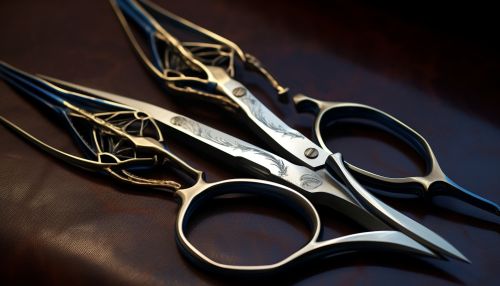Forceps
Introduction
Forceps are a handheld, hinged instrument used for grasping and holding objects. Originating from the Latin word "forceps" meaning "that which is hot", they are used when fingers are too large to grasp small objects or when many objects need to be held at one time while the hands are used to perform a task. The term 'forceps' is used almost exclusively within the medical field. Outside medicine, people usually refer to forceps as tweezers, tongs, pliers, clips or clamps.
History
The first known use of forceps dates back to the ancient Romans, who used a simple version of the tool in cooking and in surgical procedures. The design of forceps has evolved over the centuries, with many different styles and sizes being developed to suit specific tasks and professions.
Design and Types
Forceps come in many different designs depending on their intended use. All forceps, however, share a common basic design. They consist of two tines, joined at a pivot near their midpoint. This forms a pair of levers that can be squeezed together at one end to move the tines at the other end.


Medical Forceps
Medical forceps are used in surgery for various purposes including suturing, clamping blood vessels, and manipulating tissues. There are several types of medical forceps, including:
- Hemostatic - These forceps are used to control bleeding by clamping onto a blood vessel.
- Tissue - These forceps are used to hold and manipulate delicate tissues during surgery.
- Obstetrical - These forceps are used in childbirth to assist in the delivery of a baby.
- Dental - These forceps are used in dentistry to extract teeth.
Laboratory Forceps
In a laboratory setting, forceps are used to handle materials that should not be touched by human hands. They can be made of plastic or metal and may be disposable or reusable. Types of laboratory forceps include:
- Dissecting - These forceps are used in dissection and in handling contamination-sensitive materials.
- Tweezer - These forceps are used for handling small objects or for reaching into small areas.
Other Types
There are also forceps designed for specific tasks in other fields, such as:
Manufacturing Process
The manufacturing process of forceps involves several steps, including forging, heat treatment, grinding, and polishing. The process begins with the forging of the forceps, where a piece of metal is heated and hammered into the desired shape. The forceps are then heat-treated to increase their hardness and durability. After heat treatment, the forceps are ground to their final shape and polished to a smooth finish. Some forceps may also be coated with a non-stick material to prevent them from sticking to tissues or other materials.
Usage and Handling
Proper usage and handling of forceps are crucial to ensure their effectiveness and longevity. Forceps should be held in a manner that allows for precise control while minimizing hand fatigue. When using forceps, it is important to apply only the minimum amount of pressure necessary to accomplish the task. Excessive pressure can damage the forceps and the object being handled. After use, forceps should be cleaned and sterilized to prevent the spread of infection.
